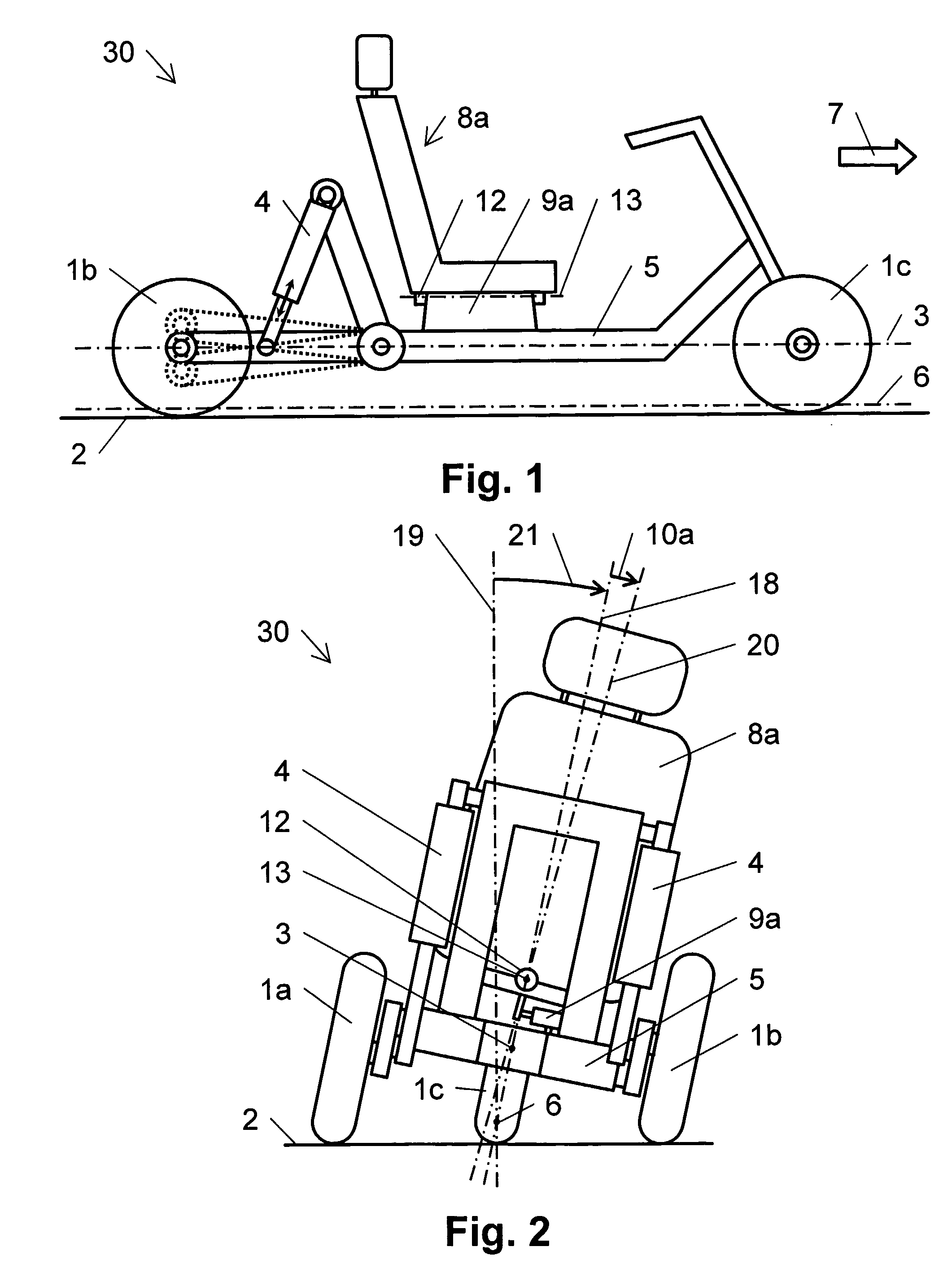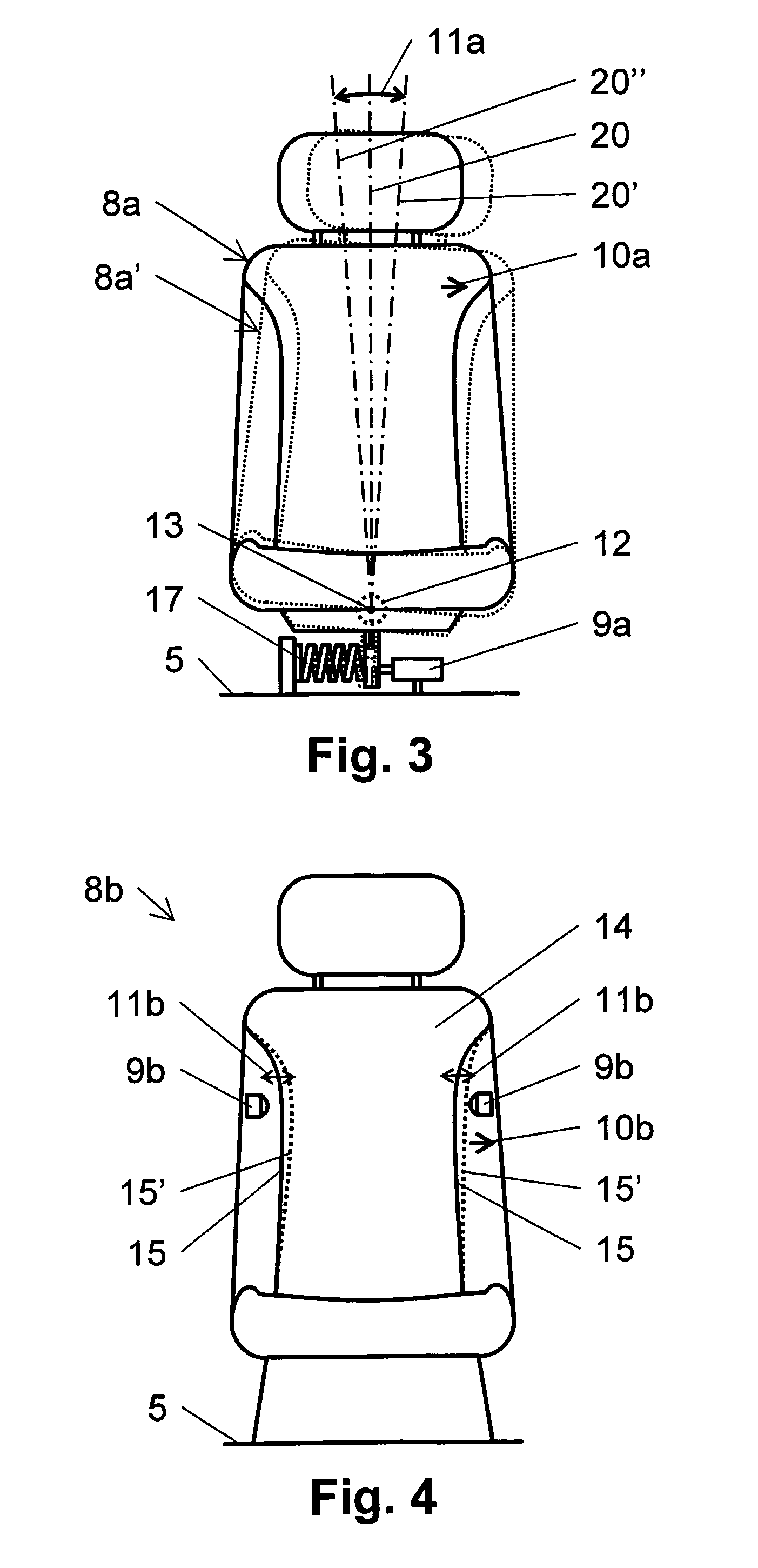Multitrack curve-tilting vehicle, and method for tilting a vehicle
a multi-track, curve-tilting technology, applied in the field of curvetilting vehicles, can solve the problems of not being able to provide to the driver, not being able to exercise a sensitive control of vehicle tilt, and provoking startled reactions of the driver, and achieve good stability
- Summary
- Abstract
- Description
- Claims
- Application Information
AI Technical Summary
Benefits of technology
Problems solved by technology
Method used
Image
Examples
Embodiment Construction
[0034] In FIGS. 1 and 2, one possible embodiment of the multitrack curve-tilting vehicle according to the invention is schematically represented in a lateral and in a rear view, respectively. The three-wheeled vehicle 30 represented comprises three supporting elements 1a, 1b, 1c resting on a ground 2 and formed as a front wheel 1c, a right-hand rear wheel 1b, and a left-hand rear wheel 1a. The front wheel 1c is steerable, and is centrally arranged in the vehicle's longitudinal axis 3, while the two lateral wheels 1a and 1b are mounted essentially symmetrically relative to the vehicle's longitudinal axis 3. The three-wheeled vehicle 30 has means 4 for laterally tilting the vehicle's frame 5 about a tilting axis 6 that runs essentially parallel to the vehicle's longitudinal axis 3, so that while traveling, more particularly in a bend or on sloping or uneven ground, the vehicle's center of gravity can be displaced in a direction perpendicular to the direction 7 of travel. The lateral t...
PUM
 Login to View More
Login to View More Abstract
Description
Claims
Application Information
 Login to View More
Login to View More - R&D
- Intellectual Property
- Life Sciences
- Materials
- Tech Scout
- Unparalleled Data Quality
- Higher Quality Content
- 60% Fewer Hallucinations
Browse by: Latest US Patents, China's latest patents, Technical Efficacy Thesaurus, Application Domain, Technology Topic, Popular Technical Reports.
© 2025 PatSnap. All rights reserved.Legal|Privacy policy|Modern Slavery Act Transparency Statement|Sitemap|About US| Contact US: help@patsnap.com



